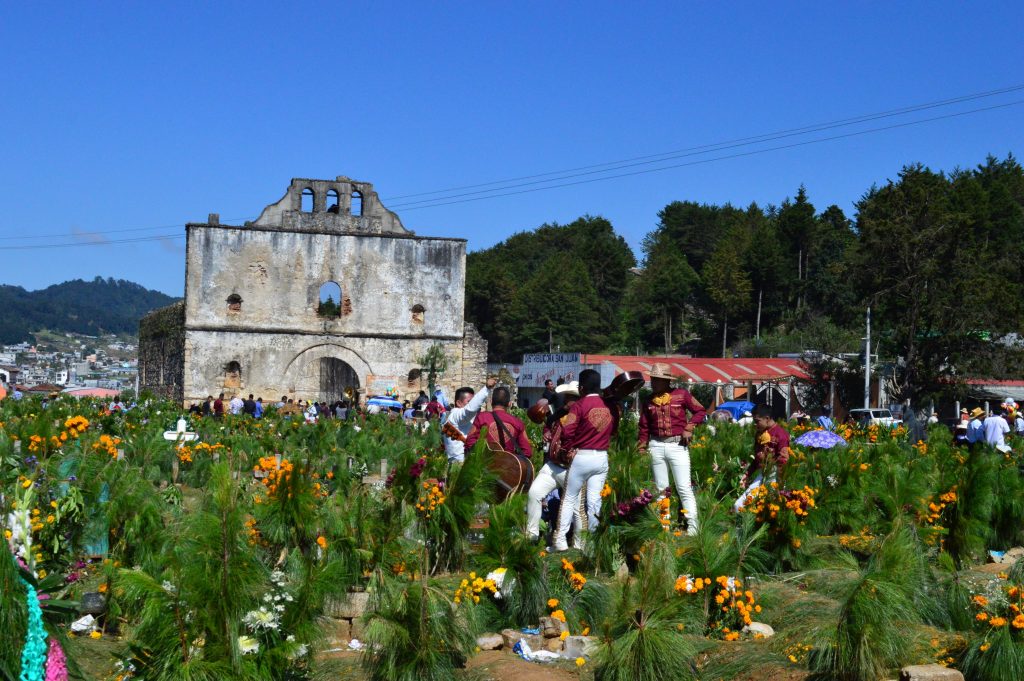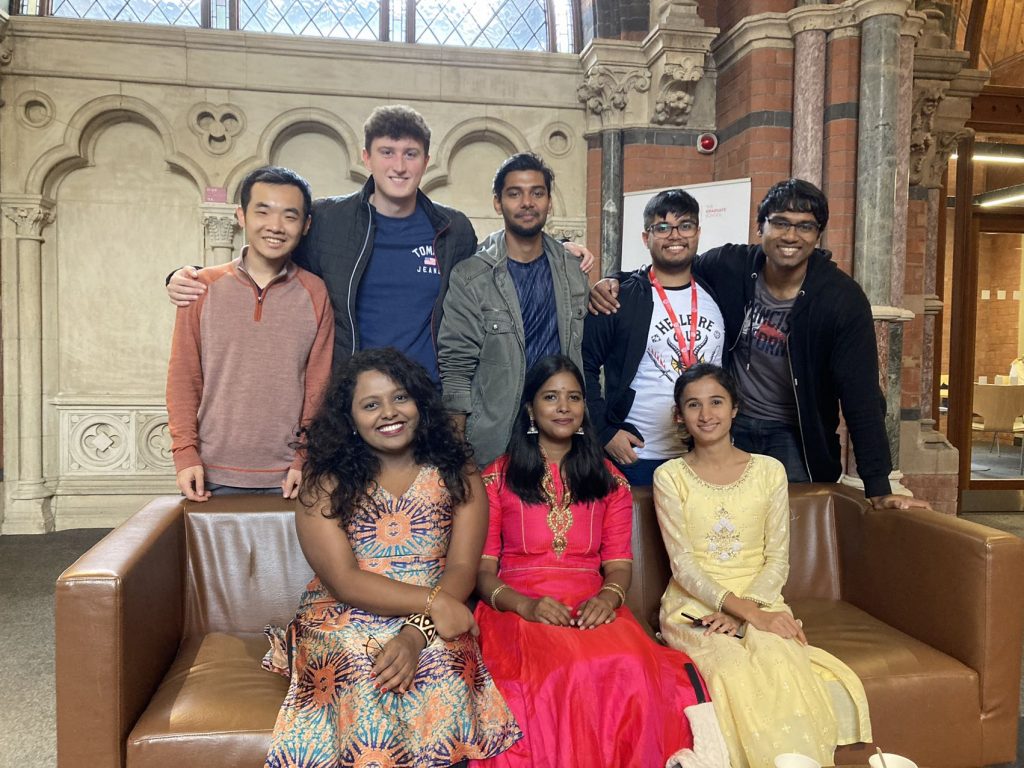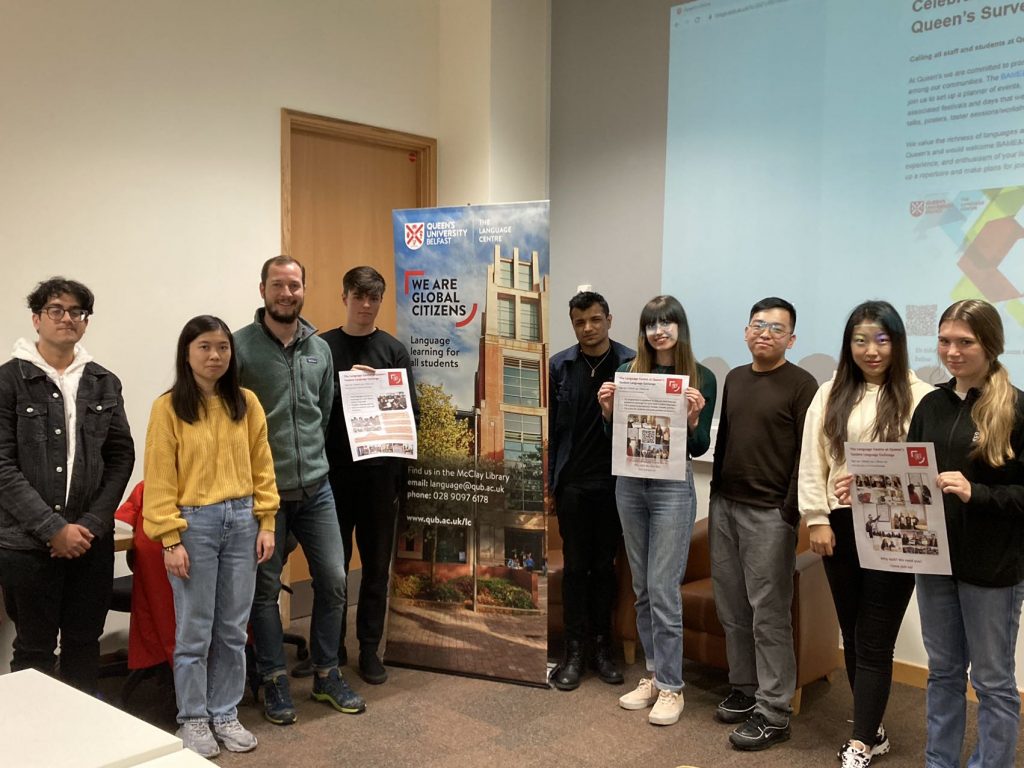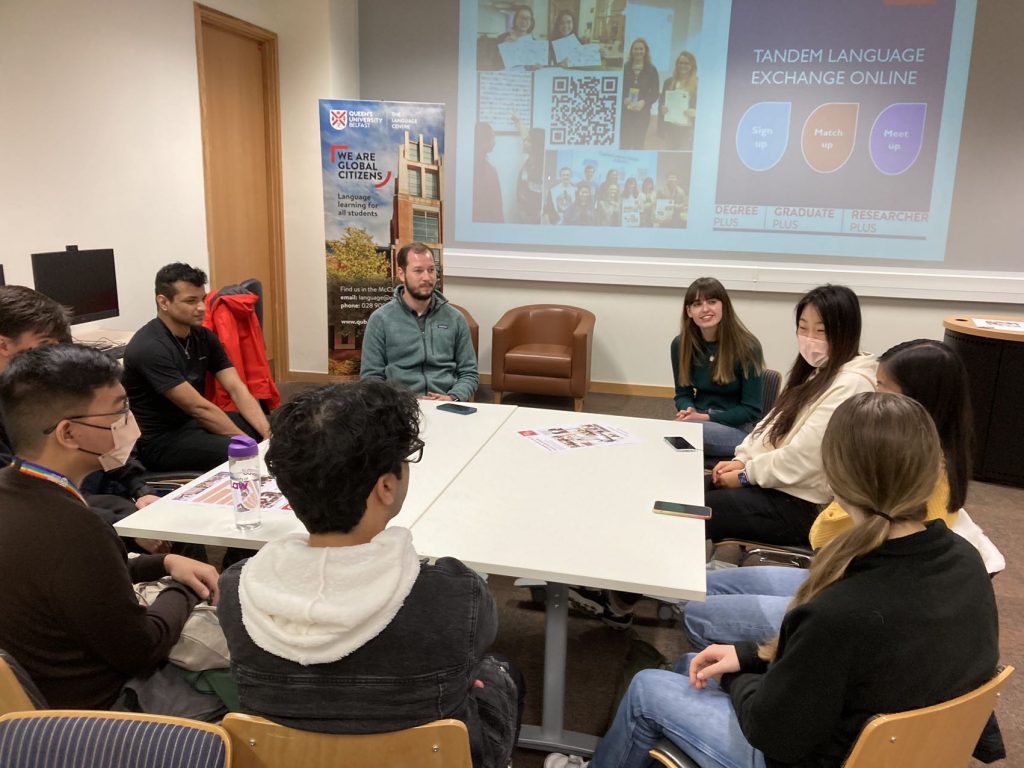‘I see it coming – the excitement starts to build up not only in my body, but in my family, in my whole nation, among my people, whether they live or not, in Mexico... The Day of the Dead is expected with illusion everywhere and this festivity is a distinctive feature of our culture.‘
– Ingrid Briano (QUB alumna)
For many of us, the most special period (between the last day of October until the second of November) of the year, when the smells of mandarins and cempazuchitl flowers float in the air preparing the way to receive our ancestors, it is the time of festive peace, of joyful nostalgic that is hard to understand for many foreigners who are equally fascinated and confused when they are in the boiling atmosphere of the Mexican celebration of the Day of the Dead.

Death is perceived in a very particular way in my country since the pre-Hispanic times, and this is especially shocking for cultures for whom the concept of the death is fearful, dark, painful. For our ancestors like the Mayas and Aztecs, death was in synchrony with life.
Death was needed to sustain life, human blood and sacrifices were needed so their Gods could continue blessing humans with life, crops, prosperity… death was only a stage in the cycle of life.
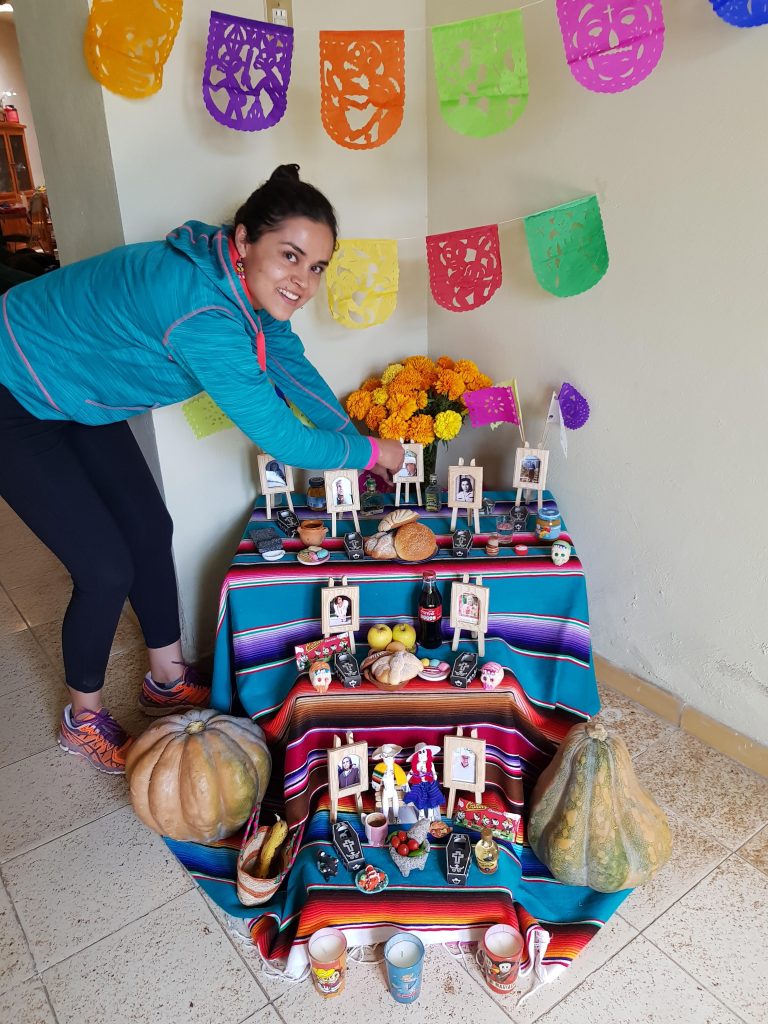
This is a time for family bonding and gathering, we get together to celebrate the lives of our ancestors, to be grateful for their legacy and to honour their memories. At home, this is one of the few times of the year when all my family sits around the table, sometimes the door rings and suddenly we have uncles, aunties and cousins showing up to eat “un panecito”. This is also a time to discover things about our family, like the time I knew that my great grandparents had to get married in a cave because during that time the government closed the churches and prosecuted priests and Catholics.
If we keep talking about the essential components of this celebration, we cannot forget the “altar de Muertos”, present equally at home, in public buildings and plazas, or in schools, where since we were kids we made them to join in contests against other groups. The altar must contain some elements, like water, salt, the orange cempazuchilt flowers distinctive of this festivity, the portraits of our beloved ones who already departed, their favourite food, and candles to guide them, to show them the way home.
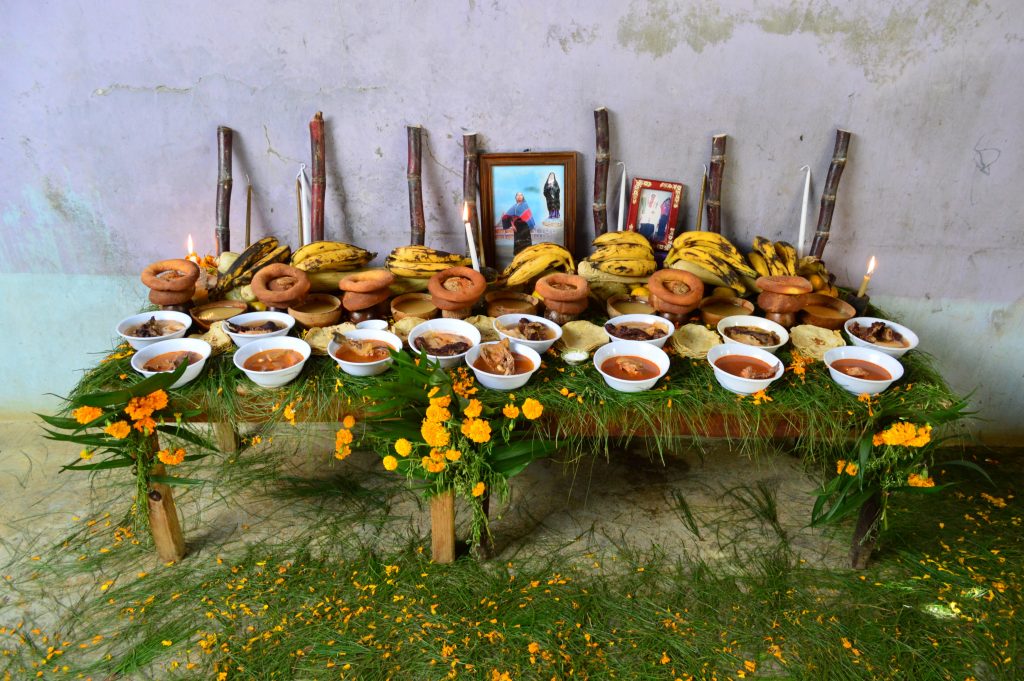
The altar and the elements may vary depending on the region and group. Some indigenous communities put their favourite saints instead of the portraits of their relatives, and in many families we include an arch of flowers that some believe, symbolizes the division between the world of the death and the alive, a species of portal between the two worlds. Because for a couple of days they are among us, they come to taste the food we prepared for them, they come to comfort us for the pain of their loss. It is said that if you try the food later, you won’t find any taste because your hungry relatives already “ate” it.
Although it often takes a few days to design it – buying all the elements and preparing the food – it is a moment of unity not only with the family, but with the community. I always buy the flowers to a man who knows much of my deceased relatives, and I always pull a story out of him of one of my relatives, because “once he saw my abuelito when he was buying some cows bla bla bla….”.

Furthermore, millions of people dress up as the icon of this festivity: the “Catrina”, the fashioned – bony creation of Mexican lithographer Jose Guadalupe Posada, who used to portray skulls and skeletons in his illustrations to protest and criticize the Mexican society of the late 19th and early 20th centuries. These dancing and colourful skeletons invade the streets during the parades held in cities and towns along the country.
And also, you can find the minion version knocking at your door, screaming “el muertito, el muertito” and demanding treats in our Mexican version of trick or treat. This tradition has been changing and getting stronger during the last decades, taking some distance from the similar Halloween, to become a very proud and intrinsic Mexican tradition. You will see fewer and fewer witches, zombies, mummies, and pumpkins, and more and more catrinas and catrines, and characters of the Mexican popular culture like “el chavo del ocho”, Cantinflas or heroes of the Mexican revolution returned from the underworld with a beautiful childish face and some creepy scar and blood on the forehead. I especially wait for this moment, because the kids know that my mom is always prepared with bags and bags of sweets to receive them. When they knock, they are always welcome by an Ingrid – Catrina who gives them sweets, and well, she keeps some to herself, because that day she turns into a little girl herself.
And what about the cemeteries? You would be surprised… don’t expect a chorus of cries and rivers of tears… but to see people cleaning the graves, painting and decorating them, putting fresh flowers and even new toys for a child grave. Pay attention to the families having picnics and laughing around the graves, listen to the mariachis playing ranchera (a genre of traditional music of Mexico) and singing with all their heart… join the party, and above all, don’t be sad. Join our most beautiful tradition, join us to welcome our beloved ones because they never left; join us to celebrate their lives instead of feeling sorry for their passing because they only die when we forget them, and that will never happen, as they will always be alive in our hearts and memory, and they are always loved.
Feliz dia de Muertos!!
About the author

Ingrid Briano Jasso
Ingrid, from Mexico, obtained her MSc in Leadership for Sustainable Development at Queen’s in 2018.
View here to learn more about her QUB experience.
All photos curtesy of Ingrid Briano, all rights reserved.

